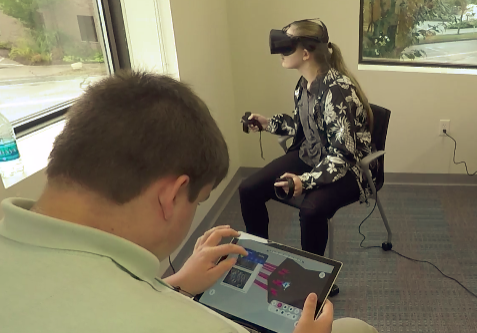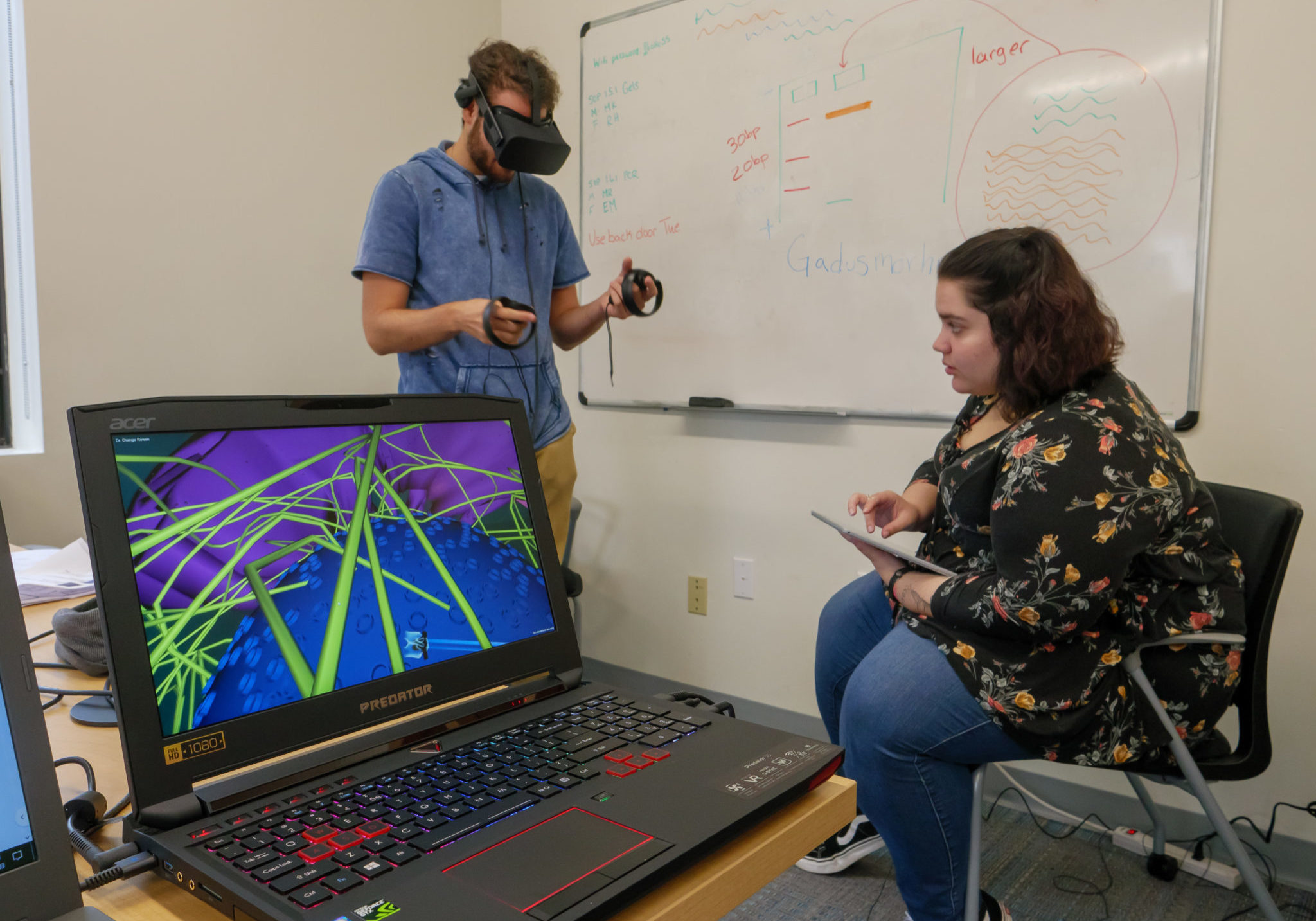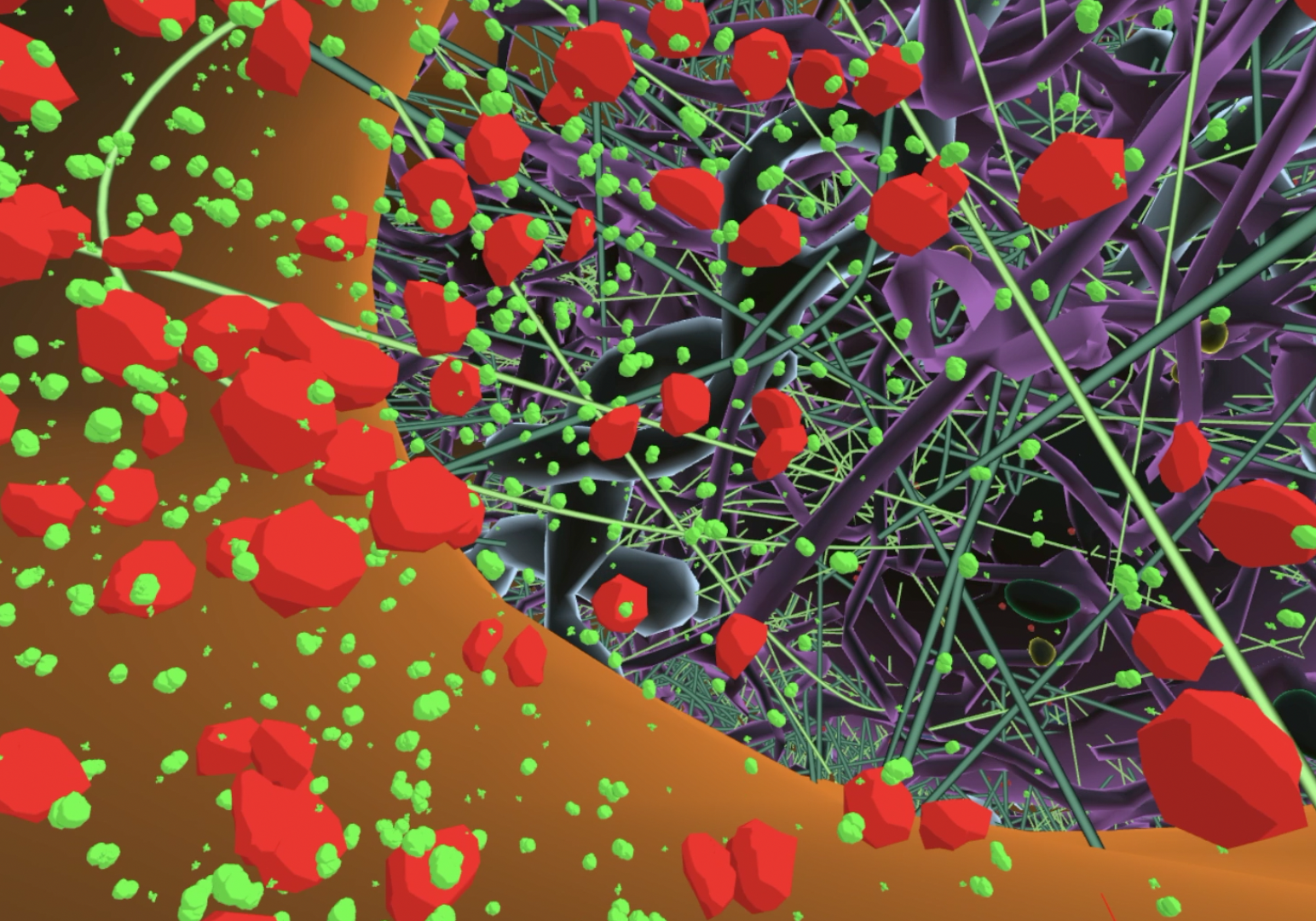Overview
The Collaborative Learning Environments in Virtual Reality (CLEVR) project is designed to create immersive virtual reality learning experiences that can be used in today’s classrooms. CLEVR is a partnership between the Education Arcade and the MIT Game Lab, and is supported by Oculus. We are developing a collaborative educational game using immersive 3DVR to help teams of high school students learn cell biology called Cellverse.

Research
Thompson, M., Uz Bilgin, C., Wang, A., Anteneh, M., Roy, D., Klopfer, E. (2020). Influence of Virtual Reality on High School Students’ Conceptions of Cells. Journal of Universal Computer Science
Uz-Bilgin, C., Thompson, M. & Anteneh, M. Exploring How Role and Background Influence Through Analysis of Spatial Dialogue in Collaborative Problem-Solving Games.J Sci Educ Technol 29, 813–826 (2020). https://doi.org/10.1007/s10956-020-09861-5
Thompson, M., Tutweiler, S., & Bressler, D. (2020). Beyond the novelty effect – examining learning affordances of XR educational technologies in STEM conceptual understanding and skill development. Accepted National Association of Research in Science Teaching (NARST) Portland OR. March 14-18, 2020
Uz Bilgin, C., Anteneh, M., Thompson, M. (2020). What’s so Special about Spatial? A Review Study Joining Virtual Reality and Spatial Ability. Education and Information Technologies (under review).
Thompson, Meredith; Kaser, David; Grijvala, Kara (2019): Envisioning Virtual Reality: A Toolkit for Implementing VR in Education. Carnegie Mellon University. Book. https://doi.org/10.1184/R1/9700397.v1
Thompson, M. Zhang, L., Sayem, M., Fan, J., Wang, A., Perry, J., Klopfer, E. (2019) Designing for Group Flow in Collaborative Cross-Platform Learning Experiences. Connected Learning Summit Irvine CA October 2-5 2019.
Wang, A., Thompson, M., Roy, D., Pan, K., Perry, J., Tan, P., … & Klopfer, E. (2019). Iterative user and expert feedback in the design of an educational virtual reality biology game. Interactive Learning Environments, 1-18.
Thompson, M., Olivas-Holguin, H., Wang, A., Fan, J., Pan, K., Vargas, D., Gerr, J. (2018). Rules, Roles, and Resources: Strategies to Promote Collaboration in Virtual Reality Contexts. CHI 2018 “Novel Interaction Techniques for Collaboration in VR Workshop”.
Thompson MM, Wang A, Roy D and Klopfer E (2018) Authenticity, Interactivity, and Collaboration in VR Learning Games. Front. Robot. AI 5:133. doi: 10.3389/frobt.2018.00133
Thompson, M. (2018) Making Virtual Reality a reality in classrooms. THE Journal. January 11 2018.
Thompson, M., Olivas-Holguin, H., Wang, A., Fan, J., Pan, K., Vargas, D., Gerr, J. (2018). Rules, Roles, and Resources: Strategies to Promote Collaboration in Virtual Reality Contexts. CHI 2018 “Novel Interaction Techniques for Collaboration in VR Workshop”.
Thompson, Meredith & Wang, Annie. (2018). Designing for Learning in VR: Moving Beyond the Novelty Effect. Connected Learning Summit
Thompson, Meredith & Roy, Dan & Perry, Judy. (2018). Designing Cellverse -a VR game for learning biology. Connected Learning Summit

